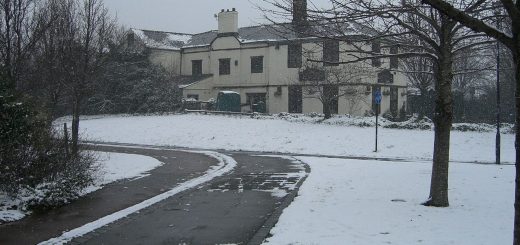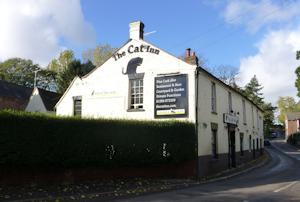Brede Place
Originally dating from the 14th century, Brede Place is a Grade II listed building that was then rebuilt in the 15th century by Sir Robert Oxenbridge, father of Sir Goddard Oxenbridge, the Bede Giant. For a time the house was associated with smugglers and some haunt like stories were told to keep the locals away. This is confirmed in ‘Black’s guide to the county of Sussex and its watering-places’ (1886) ‘Sir Goddard, who about 1530 made considerable additions to the mansion, is traditionally reported to have lived upon human flesh, with a particular relish for that of infants. Neither bow and arrow, nor axe, nor sword, nor spear, could slay this redoubtable giant, but some of the country folk about here succeeded at length in making him drunk, and sawing him in half with a wooden saw. His house, about a century ago, was tenanted by a gang of smugglers, who, by inventing strange sights, and uttering unearthly noises, contrived very effectually to secure it to themselves, undisturbed by any over-curious hind.’
![Highways_and_Byways_in_Sussex.djvu: en:Edward Verrall Lucas (1868–1938)derivative work: — billinghurst sDrewth [Public domain or Public domain], via Wikimedia Commons](http://www.mysteriousbritain.co.uk/wp/wp-content/uploads/2018/12/thumbnail_1280px-Brede_Place_from_the_South1-300x229.png) The following extract from ‘Highways & Byways in Sussex’(1904) by E.V. Lucas also alludes to the smugglers being responsible for stories associated with Brede Place. ‘And, on the Brede by-road, it is worthwhile also to turn aside again in order to see Brede Place. This house, like all the old mansions (it is of the fifteenth and sixteenth centuries), is set in a hollow, and is sufficiently gloomy in appearance and surroundings to lend colour to the rumour that would have it haunted–a rumour originally spread by the smugglers who for some years made the house their headquarters. An underground passage is said to lead from Brede Place to the church, a good part of a mile distant; but as is usual with underground passages, the legend has been held so dear that no one seems to have ventured upon the risk of disproving it. ‘
The following extract from ‘Highways & Byways in Sussex’(1904) by E.V. Lucas also alludes to the smugglers being responsible for stories associated with Brede Place. ‘And, on the Brede by-road, it is worthwhile also to turn aside again in order to see Brede Place. This house, like all the old mansions (it is of the fifteenth and sixteenth centuries), is set in a hollow, and is sufficiently gloomy in appearance and surroundings to lend colour to the rumour that would have it haunted–a rumour originally spread by the smugglers who for some years made the house their headquarters. An underground passage is said to lead from Brede Place to the church, a good part of a mile distant; but as is usual with underground passages, the legend has been held so dear that no one seems to have ventured upon the risk of disproving it. ‘
Tradition alludes to a monk known as Father John haunting Brede Place, who is thought to have been one of the friars that originally built the manor house alongside knights of King Edward III. I do not know whether the ghost of Father John was one of those made up by the smugglers. However, Brede Place was used to billet servicemen during World War II. It is said that some Canadian officers staying here reported that they were being harassed by a ghostly monk or monks, who would hide their clothes and move furniture around.
Other ghosts associated with the Brede Place are a 16th century maid possibly called Martha who was hanged (either in the grounds or on a hill close by), Sir Goddard Oxenbridge and a headless man.




Re: Brede Place
The Oxenbridge family held Brede Place until the mid 17th century when it was sold. It passed through a few hands until it was bought by Sir Edward Frewen of Brickwall House (Member of Parliament for Rye) in 1712. In 1898 Brede Place was again sold to Member of Parliament Moreton Frewen (Born 1853 – Died 1924) by his brother Colonel Edward Frewen. Moreton’s wife was Clara Jerome, sister of Lady Randolph Churchill (Sir Winston Churchill’s mother). They rented the house to Stephen and Cora Crane. Stephen Crane (Born 1 November1871 – Died 5 June 1900) was the acclaimed American author of The Red Badge of Courage. Crane died of tuberculosis in Germany on 5 June 1900. The Cranes held a Christmas party in 1899 at Brede Place which was attended amongst others by Herbert George Wells (H G Wells) (Born 21 September 1866 – Died 13 August 1946) and Nobel Prize nominee Henry James (Born (1843-04-15)15 April 1843 – Died 28 February 1916(1916-02-28))